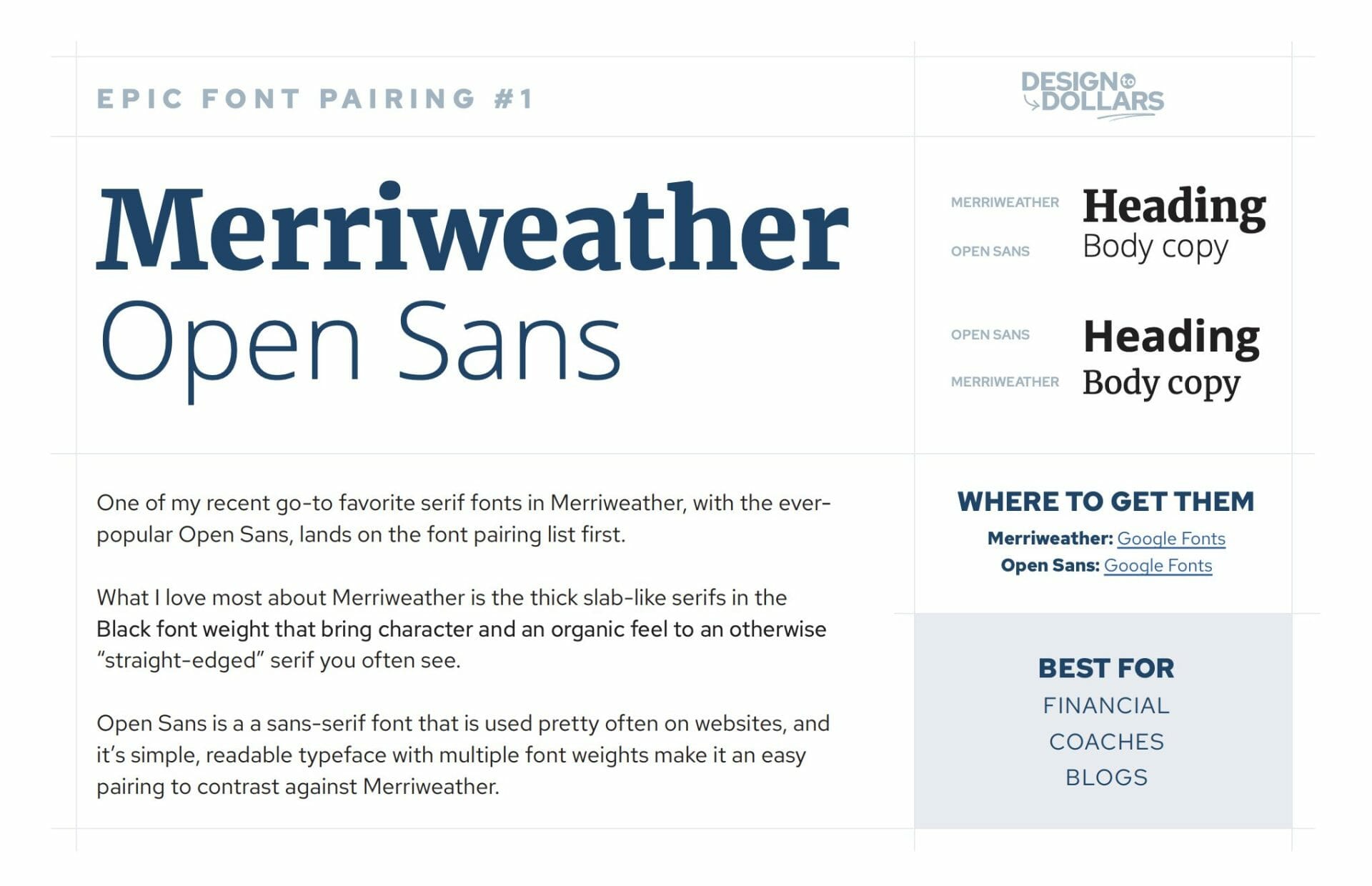When your website design and build is complete, next comes the review process where you, as the client, will be providing feedback and revisions.
It’s easy to just want to jump in and say, “change that image” or “I don’t like that color anymore.”
But for us, that doesn’t help us understand why so we can create a better solution for you and your business goals.
We totally understand that revisions are part of this process, so in order to make it easier, we’ve provided tips and examples on how you can structure your revisions and feedback for optimal results.
5 Epic Font Pairings You Can’t Go Wrong With
Tired of searching for fonts? With my 10+ years of design experience, I’ve put together the best font pairings for you to use, where to find them, and what industry they’re best for.
Get the Free Guide
Helpful Feedback (Good)
Example: “That shade of blue doesn’t feel vibrant enough for the visual language of my brand.”
- Be honest. If you don’t like something, please let us know. You won’t hurt our feelings. Handling feedback is part of our job!
- Be specific. Point out what exactly is not working for you and why. Be as detailed as possible.
- Ask why. If you aren’t sure why something is the way it is, please ask about it — we’re happy to explain. Everything we’ve done for the project has a purpose.
- Refer to your goals. Always orient your comments to your end objective — what is the main goal here? And does this feedback add or remove from that?
- Relate to your audience. Your audience should be top of mind for every critique, so please include how your comment will help better serve them.
- Be timely. Provide feedback by the given deadline so we can fix things sooner rather than later and get your website launched!
Prescriptive Feedback (Not So Good)
Example: “Change this word. Make this bigger.”
- Team commentary. We work best when you alone serve as the expert on your company and its audience. Art by committee is rarely successful, so let’s try to keep the process exclusive to just you and us.
- It’s not personal. If we missed the mark or disagree with you, it’s because we’re thinking about your goals and audience. It’s not personal, it’s business — and we always have the best intentions for you to succeed.
- Redo the work. Please provide written or verbal instructions about what isn’t working; don’t redo our work to illustrate your point.
- Prescribe fixes. You hired us to provide expertise and solutions, so let us use our skills to help you. Explain the problem and we’ll pitch potential fixes based on what we think is best.
Other Things to Know
In addition to structuring your feedback properly, here’s some additional insight to keep in mind.
- Sometimes we’re going to ask why. It’s not a challenge, it’s simply a question that will help us get on the same page and find the best outcome for you.
- Feedback is on a tight schedule. If we don’t get your notes within the specified time frame, our project deadlines can be thrown off.
- Remember, we’re in this together. Feedback can be challenging, but when we work collaboratively, we can produce something truly valuable for your business.
How feedback should be delivered
- Utilizing our visual feedback tool. We provide you the link to your website where you’ll be able to click and comment on any page for specific feedback.
- Via email, for all other feedback. If it’s not something you can provide through the visual tool, please gather all your additional notes in a single email or Document for us. Be sure to mention specific pages/sections that your notes refer to, if applicable.
- Questions are welcome. Feedback doesn’t have to be change requests…it can also be questions you’ve got about decisions we’ve made. We’re here to help, and open communication is a big part of how we’ll make something meaningful together.
We appreciate you working with us through the feedback process and can’t wait to see the final result!




